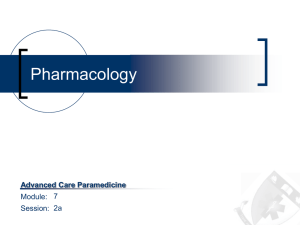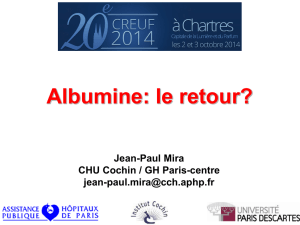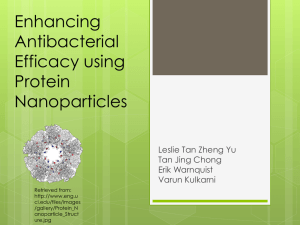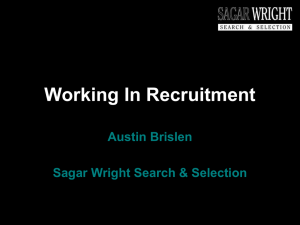Guidelines for the Usage of Human Albumin Solution at WIG/GGH
advertisement
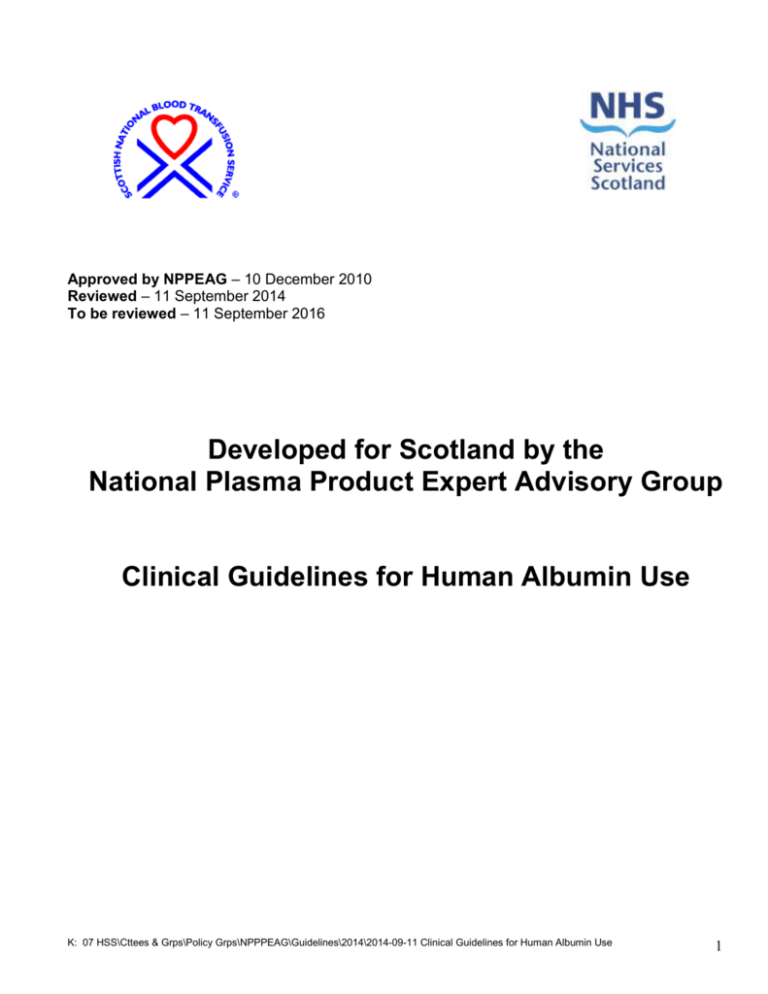
Approved by NPPEAG – 10 December 2010 Reviewed – 11 September 2014 To be reviewed – 11 September 2016 Developed for Scotland by the National Plasma Product Expert Advisory Group Clinical Guidelines for Human Albumin Use K: 07 HSS\Cttees & Grps\Policy Grps\NPPPEAG\Guidelines\2014\2014-09-11 Clinical Guidelines for Human Albumin Use 1 National Plasma Products Expert Advisory Group Guidelines for the Usage of Human Albumin Solution (HAS) 1. Ascites and large volume paracentesis: Where management of ascites is refractory to sodium restriction (90mmol/day) HAS is indicated following paracentesis (British Society of Gastroenterology Guidelines, 2006; EASL clinical practice guidelines, 2010). Paracentesis without albumin replacement leads to a fall in pulmonary capillary wedge pressure, maximal at 6 hours, and can result in circulatory and renal dysfunction. Where there is normal premorbid renal function: Administer 1 unit (100ml) HAS 20% (STAT) following every 3 litres of ascites drained. Where renal function is impaired consider either: Administration of 100ml HAS 20% per 2 litres of ascites. or adherence to the protocol for hepatorenal syndrome (see below). 2. Spontaneous bacterial peritonitis (SBP): Administration of HAS in the setting of SBP reduces the incidence of renal failure and reduces mortality (British Society of Gastroenterology Guidelines, 2006; EASL clinical practice guidelines, 2010): Day 1: 1.5g HAS / kg given over a 6 hour period: Day 3: 1g HAS / kg given over 3 hours 3. Hepatorenal syndrome (HRS) Administration of HAS and vasoconstrictors are effective therapy in 60% of patients with HRS and is associated with improved survival (EASL clinical practice guidelines, 2010):. Terlipressin: 0.5 – 2mg iv every 4 hours, plus Day 1: 1g / kg HAS Day 2 - 16: 20 – 40 g HAS / day Rx continued until serum creatinine falls below 130mol/l. NB. Where creatinine is rising despite Rx, 60g HAS /day may be clinically indicated. Therapeutic apheresis (Therapeutic Plasma Exchange TPE) TPE has a clearly defined role in a large variety of conditions that are presumed to be K: 07 HSS\Cttees & Grps\Policy Grps\NPPPEAG\Guidelines\2014\2014-09-11 Clinical Guidelines for Human Albumin Use 2 immunologically mediated. The indications for TPE are protean and listed in a recent guideline produced by the American Society for Apheresis (Szczepiorkowski et al 2010). The standard replacement fluid for TPE is 5% HAS with or without saline. FFP / Octaplas may be indicated dependent on the indication ie. TTP. The volume treated per procedure is usually: 1–1.5 total plasma volumes (TPV). Procedures may continue daily for up to several weeks in some cases. Other indications There is little evidence to support the use of HAS in other circumstances (Cochrane Injuries Group 2011; Jacob et al 2008; Kuper et al 2007; Perel and Roberts 2011) and these require discussion with pharmacy or haematology medical staff before release can be sanctioned, unless specifically requested a Consultant Physician with frequent experience of HAS administration (eg. gastroenterology Consultant). Volume expansion – Synthetic alternatives or Saline may be used for temporary intravascular volume expansion. No studies have convincingly shown that 5% Albumin confers any survival advantage. Requesting Human Albumin Solution: Human Albumin Solution (HAS) is available from the Hospital Pharmacy. The indication for its use should be documented in the case notes and there should be written documentation of its prescription. The products in stock are: Human Albumin Solution 5% 500ml (approx. 25g albumin) & 100ml (approx. 5g albumin) Human Albumin Solution 20% 100ml (approx. 20g albumin) Administration: 20% Albumin is hyperoncotic. The 100ml volume will expand to approximately 400mls within 25 minutes of transfusion. Rapid administration can lead to rapid volume expansion and cardiac failure. There is no UK published data regarding 20% Albumin infusion rates; in clinical practice it is usual to infuse 100mls over 30 minutes (personal communication AL/RS), but infusion rate varies and depends on clinical circumstances. References: British Society of Gastroenterology – Guidelines for the management of ascites in cirrhosis. Gut 2006 ; 55: 1 – 12. Cochrane Injuries Group. Albumin Reviewers. Human albumin solution for resuscitation and volume expansion in critically ill patients. Cocharane Database Syst Rev 2011; 11: CD001208. EASL clinical practice guidelines on the management of ascites, spontaneous bacterial peritonitis and hepato-renal syndrome in cirrhosis. Journal of Hepatology 2010; 53: 397-417. Jacob M et al: Small-volume resuscitation with hyperoncotic albumin: a systematic review of randomized clinical trials. Critical Care 2008 Vol 12 No 2 R34. K: 07 HSS\Cttees & Grps\Policy Grps\NPPPEAG\Guidelines\2014\2014-09-11 Clinical Guidelines for Human Albumin Use 3 Kuper M et al: The short-term effect of hyperoncotic albumin, given alone or with furosemide, on oxygenation in sepsis-induced Acute Respiratory Distress Syndrome. Anaesthesia 2007; 62: 259 – 263. Perel P, Roberts I. Colloids versus crystalloids for fluid resuscitation in critically ill patients. Cocharane Database Syst Rev 2011; 30: CD000567. Szczepiorkowski, Z et al: Guidelines on the Use of Therapeutic Apheresis in Clinical Practice Evidence-Based Approach from the Apheresis Applications Committee of the American Society for Apheresis. Journal of Clinical Apheresis 2010; 25: 83 - 177. Acknowledgements: Dr Christopher Brammer, Consultant Haematologist, NHS Forth Valley. Dr Kenny Douglas, Consultant Haematologist, SNBTS. Dr Jonathan Fox, Consultant Nephrologist, NHS GG&C. Dr Anne-Louise Latif, Speciality Registrar Haematology, NHS GG&C. K: 07 HSS\Cttees & Grps\Policy Grps\NPPPEAG\Guidelines\2014\2014-09-11 Clinical Guidelines for Human Albumin Use 4 SUMMARY OF INDICATIONS FOR HUMAN ALBUMIN SOLUTION INDICATION ALBUMIN PRODUCT 1. Large volume paracentesis (drainage of ascites) in patient with chronic liver disease. HAS 20% 100ml 1 bottle per every 3L ascites drained (increased to 1 bottle every per every 2L if renal function impaired). Junior medical staff on advice of Consultant Gastroenterologist or ITU Consultant. 2. Large volume paracentesis (drainage of ascites) in patient with ascites not due to chronic liver disease. May be indicated dependent on clinical circumstances. Junior medical staff on advice of Consultant Gastroenterologist or Haematologist Consultant. 3. Spontaneous bacterial peritonitis (SBP). HAS 20% 100ml 1.5g/kg on day one (usually 4-8 bottles), then 1g/kg on day 3 (usually 2-5 bottles) or HAS 5% 500ml 1g.5/kg on day one (usually 3-6 bottles), then 1g/kg on day 3 (usually 2-4 bottles). Junior medical staff on advice of Consultant Gastroenterologist or ITU Consultant. HAS 20% 100ml 1g/kg on day (usually 2-5 bottles) or HAS 5% 500ml 1g/kg on day 1 (usually 2-4 bottles) then HAS 20% 100ml or HAS 5% 500ml 1-2 bottles daily for 2-16 days (occasionally 3 bottles/day). Junior medical staff on advice of Consultant Gastroenterologist or ITU Consultant. 4. Hepatorenal syndrome. MAY BE AUTHORISED BY 5% or 20% products at discretion of Gastroenterologist or ITU Consultant. 5% or 20% products at discretion of Gastroenterologist or ITU Consultant. 5. Therapeutic Apheresis HAS 5% 500ml 1-1.5 plasma volumes daily At request of Consultant Haematologist, Apheresis Unit staff 6. Low serum albumin in haemodynamically unstable patient in critical care (HDU or ITU). Occasionally HAS 20% may be indicated. At request of Consultant Anaesthetist/Intensivist in ITU/HDU. 7. Low serum albumin in the absence of ascites, Not usually indicated. SBP or hepatorenal syndrome. Junior medical staff on advice of Consultant Gastroenterologist or ITU Consultant. 8. All other requests. Junior medical staff on advice of Consultant. Other indications are rare. K: 07 HSS\Cttees & Grps\Policy Grps\NPPPEAG\Guidelines\2014\2014-09-11 Clinical Guidelines for Human Albumin Use 5

